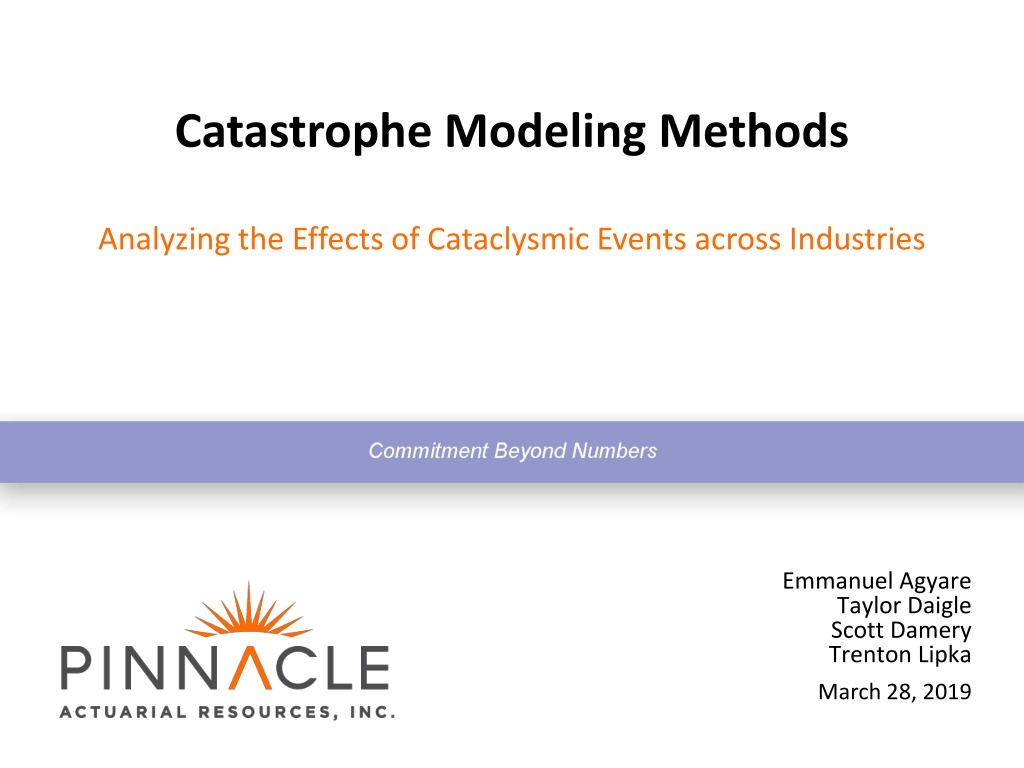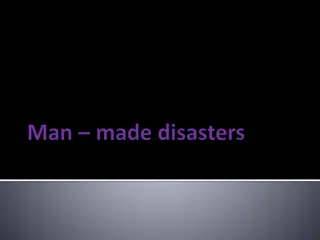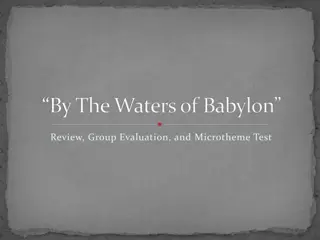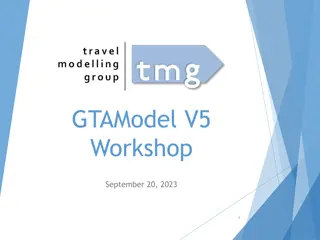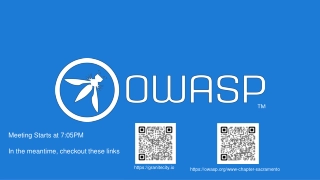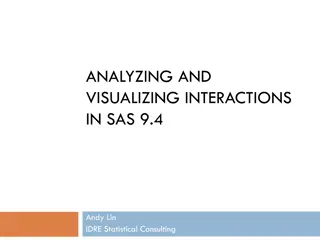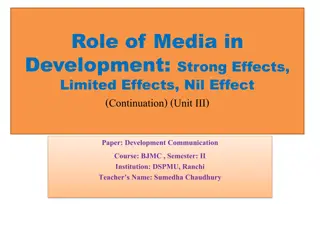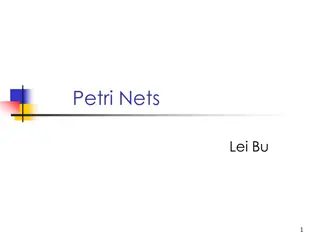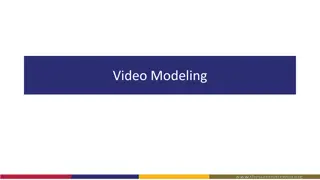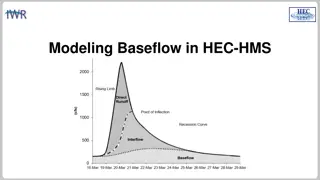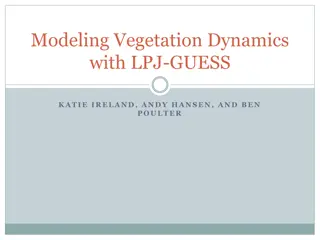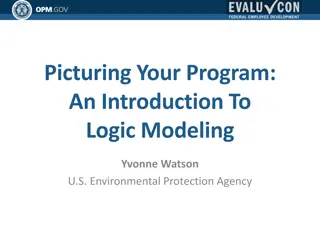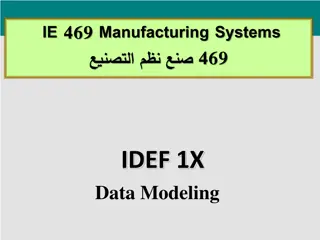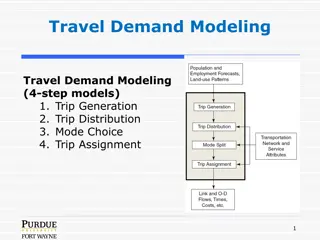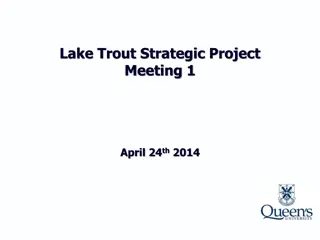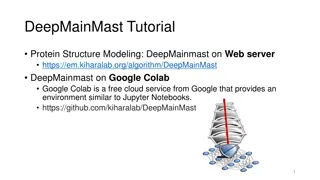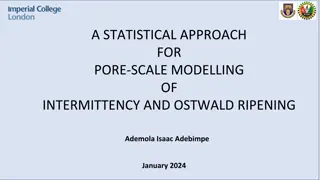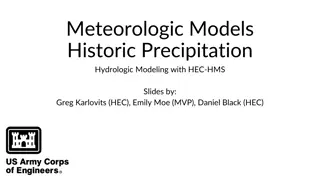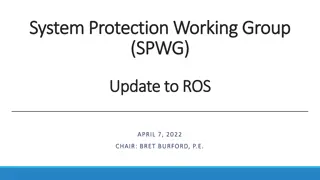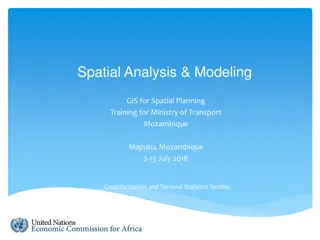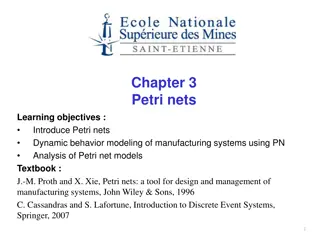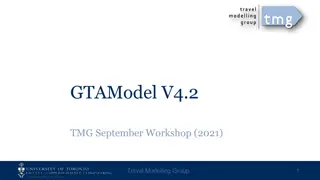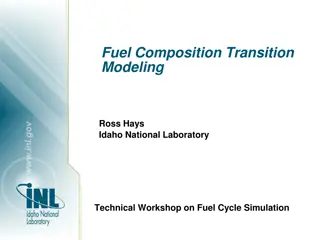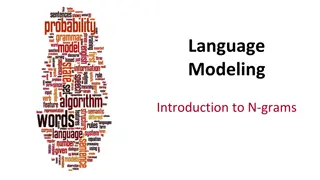Understanding Catastrophe Modeling: Analyzing Effects of Cataclysmic Events
Catastrophe modeling is vital in risk management for various perils like earthquakes, hurricanes, and pandemics. This method, blending actuarial science, engineering, meteorology, and seismology, assesses risks probabilistically and deterministically. Learn about its history, components, and major players like AIR Worldwide and Risk Management Solutions. Explore how CAT modeling impacts industries and predictions of future trends, focusing on wildfire models and recent events like California fires.
Uploaded on Sep 24, 2024 | 0 Views
Download Presentation

Please find below an Image/Link to download the presentation.
The content on the website is provided AS IS for your information and personal use only. It may not be sold, licensed, or shared on other websites without obtaining consent from the author. Download presentation by click this link. If you encounter any issues during the download, it is possible that the publisher has removed the file from their server.
E N D
Presentation Transcript
Catastrophe Modeling Methods Analyzing the Effects of Cataclysmic Events across Industries Emmanuel Agyare Taylor Daigle Scott Damery Trenton Lipka March 28, 2019
Agenda Taylor and Scott Background information regarding Catastrophe (CAT) modeling A comparison of the major CAT modeling companies An actuary s role in CAT modeling Future of CAT modeling, with a specific focus on wildfire models Trenton and Emmanuel Wildfire modeling and a look at the California fires The recent wildfire season s impact on homeowners coverage Wildfire impact on tourism and marijuana industries Conclusion & Questions 1
What is Catastrophe (CAT) Modeling? Catastrophe modeling is widely used in risk management for perils ranging from earthquakes, hurricanes, terrorism and pandemics Blend of actuarial science, engineering, meteorology and seismology Models function in two distinct ways: Probabilistically for a single event there are multiple outcomes each with a specific probability of occurring EX: For a Category 5 hurricane in a certain area, there is a 50% chance of X damage and a 50% chance of Y damage Deterministically there is only one possible outcome for an event EX: For a Category 5 hurricane in a certain area, damages are X amount every single time. This is based on historical data. 2
History First models were push pins in physical maps in the 1800s Technological advances allowed modeling to be done by computers in the late 1980 s AIR Worldwide (1987), Risk Management Solutions (RMS) (1988) emerge as leading experts in CAT modeling Hurricane Andrew in 1992 signals change in modeling approach from historical to probabilistic Insurers, reinsurers, financial institutions, corporations and governments all utilize modeling worldwide 3
Components 4 basic components Hazard simulates the intensity of hazard components Event simulates thousands of CAT events Vulnerability used to assess structures and their content Financial translates all physical damage into dollar amounts 4
AIR vs. RMS AIR YELT table Year event loss table Easy to use as a historical loss listing Mean, standard deviation can be calculated from these tables Year Event Loss Table (YELT) Year Event ID Loss 2015 1 400 2017 2 500 2017 3 800 2018 4 400 5
AIR vs. RMS RMS ELT table Event loss table Parameters given for particular events Useful in simulating individual events with RMS parameters Event Loss Table (ELT) Mean 500 300 200 Event ID Rate Sdi Sdc Exposure 10,000 5000 4000 1 2 3 0.1 0.1 0.5 500 400 300 500 800 400 6
Output 4 widely used metrics Exceedance Probability probability a loss will exceed a certain amount Return Period Loss another form of exceedance probability, describes how many years might pass between times when a loss amount will be exceeded EX: A .4% would translate to a 250-year return period loss Annual Average Loss average loss of all modeled events, weighted using annual probabilities Coefficient of Variation (CV) measures the size of each set of damage outcomes 7
Exceedance Probability Empirical OEP Curve Year Event Loss Table (YELT) PML OEP Return Period Year Event ID Loss x O(x) r = 1 / O(x) 2015 1 400 0 0.75 1.33 2017 2 500 400 0.25 4 2017 3 800 2018 4 400 800 0 infinity PML Probable Maximum Loss OEP Occurrence Exceedance Probability 8
Blending Models ELT / YELT blending Monte Carlo Simulation used to convert RMS ELT to AIR YELT Sample from a uniform distribution based off weights Weights probabilities at fixed amounts OEP Blending Weights applied directly to dollar amounts for a fixed return period Weights the dollar amounts at fixed probabilities 10
Actuarys Role Reinsurance Decisions Both sides Individual Risk Assessment Pricing Collective Risk Model Converting OEP output to claim count and severity distributions 11
Future of CAT Modeling As technological methods improve and big data processing becomes easier, models will incorporate more data points than ever New types of events will start to be forecasted: wildfires, hail & wind, cyber attacks and climate change This will redefine how we define a catastrophe Shifting focus to any disruptive event, man-made or natural What will be the next Hurricane Andrew? An event so devastating that it changes how the industry understands a risk Perhaps this event has already happened 12
Wildfire Modeling The devastating 2017 & 2018 wildfire seasons brought attention to an underserved industry Significant differences between modeling wildfires and modeling traditional catastrophes (hurricanes, earthquakes) Predicting occurrences is more difficult because most wildfires (84%) are started by humans How fires interact with undeveloped landscapes vs. urban landscapes Requires more detailed topographical models of regions Locations repeat frequently, but severity varies wildly Are the 2017 & 2018 wildfire seasons catastrophic enough to change the industry? Lets examine more closely the impact of the fires 13
Californias Camp Fire Began on November 8th, 2018 Spanned 240 square miles Destroyed almost 19,000 structures Total damages have been estimated to be $16.5 billion Approximately $4 billion was not insured At least 85 fatalities The fire was considered contained on November 25th, 2018 14
Merced Property and Casualty Company At its last full year in operation, company estimated $33.5 million per year in revenue and around 120 employees Facing $64 million in claims from California residents Liquidated all assets Passed on remaining claims to California's Insurance Guarantee Association Left hundreds without HO coverage 15
Homeowners Insurance Effects on insureds Current effect: concern with being indemnified for losses Future effect: increases in premium or unable to find coverage Effects on regulators Current effect: concern with being indemnified for losses Future effect: ensuring prices are actuarially sound but also affordable, increase in California FAIR Plan due to lack of available coverage Effects on insurance companies Current effect: insolvency due to large influx of claims Future effect: setting rates adequate to pay claims, may need to diversify to new states and markets 16
Tourism Industry A study by Visit California estimates 11% of travelers cancelled their trips because of the wildfires through August 2018. This represents an projected $20 million of loss to the state s tourism industry. The same study estimates at least 20% of all tourists visit a national park. Due to closures from wildfires, it is projected the Yosemite National Park lost upwards of $10 million in revenue through August 2018. 17
Marijuana Industry Federal law prohibits marijuana, making it uninsurable. Recreational marijuana is legal in California and is projected to bring in over $6 billion in sales by 2020. Approximately 10,000 to 15,000 operating marijuana farms in California in 2017 Larger farms can have investors purchase stake for upwards of $5 million into facilities and $3 million product. These large farmers are now pressured to get investors to put more money into the business. Plants not damaged by the fire could have been damaged by the smoke and are not fit for sale as a result. 18
In Conclusion It is vital that we continue to adapt quickly in response to catastrophic events. Models are great tools, but they are not the entire picture. Ultimately, events like the CA wildfire provide data for us to refine our use of models. 19
Questions? 20
Resources What is Catastrophe Modeling? RMS, June 2015 A Guide to Catastrophe Modeling The Review Worldwide Reinsurance, 2008 Notes on Using Property Catastrophe Model Results CAS, June 2017 The Camp Fire s Cost Force an Insurance Company Out of Business Pacific Standard, December 2018 Marijuana Farms are Burning in California Wildfires CNN, October 2017 California s Tourism Industry Hit Hard by Wildfires The California Report, August 2018 21
Thank You for Your Attention Trenton Lipka 309.807.2309 tlipka@pinnacleactuaries.com Taylor Daigle 309.807.2294 tdaigle@pinnacleactuaries.com Scott Damery sdamery@pinnacleactuaries.com Emmanuel Agyare esagyar@ilstu.edu Commitment Beyond Numbers 22
